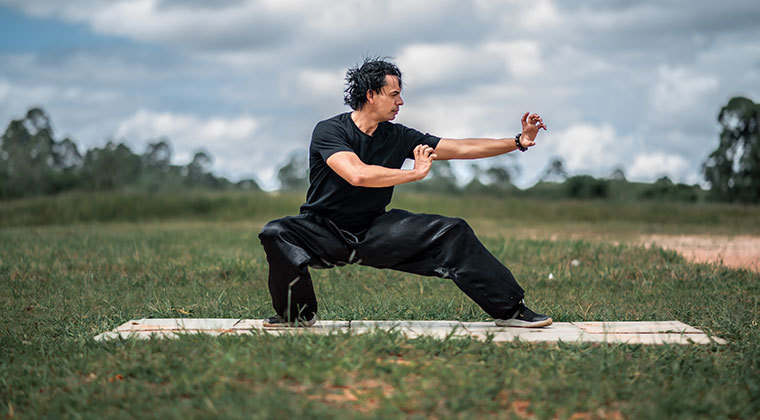Managing Emotions
An important part of self-management is having strategies in place for when you have a symptom flare-up. It's also useful to have strategies in place to manage emotional flare-ups. Given pain is influenced by emotions you need to be prepared to manage emotions during times of pain flare-up and or stress. Emotional management can help limit the negative impact of pain and stress on your overall health and life.
Identification
It can help to identify situations that can bring on strong emotions or stress. Consider asking yourself:
- What usually triggers strong emotions or stress for me?
- Are these triggers also accompanied by a pain flare-up?
- Can I identify any unhelpful thoughts that trigger strong emotions/stress?
Once you have identified your own triggers, you can think about how best to handle them when they occur so as to prevent or reduce the intensity of emotions or stress.
- What has worked for you in the past?
- What has calmed you down, or helped you get through difficult moments?
- Do you have any ideas about what might help you in the future when this happens?
Here are some tips that may be helpful when thinking about putting ideas into practice:
- Don't forget about the basics: be sure to take care of your body's basic needs, including food, sleep, water, and medications. Having basic needs met can help dampen strong emotions.
- Include strategies that have been successful for you in the past.
- Start with a strategy that will help you calm down, soothes you, or gets you focused, such as a mini-relaxation exercise or talking with someone supportive.
- Don't forget the power of positive emotions for managing difficulties.
- Written reminders can help you remember strategies you want to try.
Enjoying Yourself
Enjoying yourself is important to feeling better with pain
When you have pain, enjoying yourself may seem impossible. Engaging in pleasant activities however is not only an important part of life, it is also an important part of pain treatment.
If you are like most people with pain, you may be doing only what is "necessary", such as chores or work, but not taking time for yourself. Taking time for some personal enjoyment helps to rejuvenate both the body and mind. It may also help you:
- Become distracted from your pain
- Improve your mood
- Connect with other people
- Add balance to your life
Enjoying yourself may seem selfish at first because you feel that you should spend your time taking care of your family, job, or chores. But what may be missing from your life is time to take care of you. Spending some time doing pleasant things may help you take control of your life by balancing your responsibilities with activities you enjoy. Think about your physical and emotional energy as batteries. When you use energy to take care of daily tasks, energy drains from your batteries. If you recharge both your physical and emotional batteries, you may be able to do more for yourself and others.
Pain and resultant life changes
People who are living with chronic pain are more likely to report giving up the things they love to do in order to get the things done that they have to do. Thus, going to work, running errands, paying bills and taking care of cooking and cleaning are made a priority, while hanging out with friends, reading a book, spending time on your hobby, or even taking a long bath are skipped. This makes for a life that is not terribly enjoyable. For some, chronic pain has caused them to reconsider who they are and what they can or cannot do – this can have an impact on one's self-image and sense of purpose in life.
What can I do to bring more joy to my life?
Answer: Pleasant Activity Scheduling
Many people without pain get their chores done first and then do something enjoyable. For people with pain however, getting the chores done may mean not having any energy left for anything pleasant. People with pain need a balance of work and pleasant activities to remain functional. An approach that has worked for many people with pain is pleasant activity scheduling. In other words, you schedule in time for things that are pleasant just as you would schedule a work appointment that is a "must do".
How it's Done
Steps
Step 1: Deciding what to do
Pick activities that you enjoy. Activities could include:
- Creating or enjoying music or art
- Watching a movie or favorite TV show
- Finding a hobby, doing crafts, bird watching or playing computer or board games
- Playing with family members or a pet
- Spending time with a friend, either in person or on the phone
- Taking time to write a letter or email to an old friend
- Reading a good book or something to make you smile like jokes or comics
- Getting some exercise, such as taking a walk outside or dancing
Step 2: Making accommodations when needed
Pain may have changed what you are able to do. If a favorite activity seems too hard to do now, you may need to rethink what could be pleasant. But don't allow pain to stop all forms of pleasant/enjoyable activity. Doing things that you enjoy, even for a short time, may help you feel better. For new ideas, look at magazines or see what kinds of classes are offered online or close to where you live. If you need to change the way you do an activity, you can:
- Do it for a shorter period of time
- Break it into smaller stages
- Pace yourself and rest at set times so you don't overdo it (see PainGuide's section on Pacing )
- Do it with a friend or family member who can help you if you need it.
Step 3: Finding time for fun and pacing yourself
One way to make pleasant activities a priority is to simply start somewhere, even if you start small. Setting small, realistic goals – such as five minutes of an enjoyable activity instead of 15 or 30 – is a way to get used to adding pleasant activities back into your routine.
Overcoming barriers and challenges
Enjoying yourself may seem like a low priority to you when there are many demands on your time and energy. But feeling recharged benefits both you and those who depend on you. Below are some ideas to help you to overcome barriers and challenges that you may face.
Overcoming Challenges
Challenge: I don't have time for myself
Just as a car needs gas to run, you need to recharge and refuel your mind and body. Pleasant activities can be that fuel! Just taking five minutes to read a funny cartoon or a note from a friend may give you a little boost and help take your mind off your symptoms. But if you don't take time to renew yourself, you may exhaust yourself and run out of gas.
Challenge: My pain is more serious than a funny cartoon
Engaging in pleasant activities is not meant to cure pain. It is designed to bring balance to your mind which is likely to be focused on pain. If pain gets processed in the brain against a background of pleasantness rather than negative emotions (e.g., despair, anger, anxiety, frustration) it can be experienced as less intense.
Challenge: I want to take time to enjoy myself, but other people need me
Sometimes people may need to impose on your time. To protect this time, invite them to join you in an activity or you may want to set up clear rules about how much they can expect of you and when. Tell them you will be able to help them more if you have time to recharge yourself. PainGuide's section on Communication may help you find ways to talk about this concern with them.
Challenge: I'm having trouble enjoying myself
It can be frustrating when you are not enjoying your favorite hobbies the way you used to. Or you may be struggling to find new activities to enjoy. By setting aside time for fun and giving yourself enough time to try things you may find:
- New activities you enjoy as much as your old hobbies
- New ways to enjoy your old pastimes
- New levels of energy that may allow you to do more
For more ideas of enjoyable things to do, try asking friends and family for suggestions, or see what's available in your local community.
A note for family and friends
You may have given up personal time and interests to help take care of someone living with pain. As you help them, you also need to take time to enjoy yourself, which can mean doing activities that you both enjoy. Try:
- Scheduling time for yourself to recharge each day
- Using humor to help you stay positive
- Finding activities you can do together


